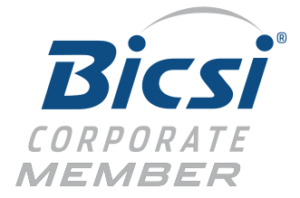Fiber optic technology has quickly become a key part of business network solutions. The demand for higher bandwidth, faster data transmissions, and more secure networks and communications has propelled fiber optics to the top of the network cabling chain. Just ask the experts at Communications Solutions Inc. in Jacksonville, Florida, and they will attest to the superior capabilities and higher demand of fiber optic technology in the business sector. In the coming years, fiber optics will integrate itself into more industries because of its capacity for modern, innovative solutions. The most apparent examples are the maritime and healthcare industries, where fiber-optic technology is destined to bring many opportunities. It shouldn’t be surprising that the fiber optic market is estimated to reach over 7 billion dollars by 2025. Today, we will discuss the future of fiber optic technology and what it may look like to give you a better idea of what’s to come.
The Future with Fiber Optic Technology
There are unlimited variables to consider when predicting what may happen over the next few years, especially when it comes to things like technology and its use cases. However, we can still make educated guesses based on the information at hand.
Let’s start by looking at what new projects are in store for fiber optics.
New and Upcoming Projects
While you may not hear about them on the news or read about them on the front page of newspapers, new fiber-optic initiatives are taking place across the globe all the time. An increasing number of cities are considering using fiber optic technology for public infrastructure and their communication networks.
For example, San Francisco aims to use fiber optics to connect a city-wide network, making it the first major city in the US to use a widespread fiber-optic network. This will enable the city to achieve high-speed internet and communications on a very large scale.
Another major project, the Pacific Light Cable Network, is planning to run 8,000 miles of underwater fiber optics from L.A. to Hong Kong. This massive project will help meet growing demands for higher bandwidth as more and more people migrate online for communication and work purposes.
This stretch of underwater fiber-optic cables is intended to provide an incredibly high capacity of over 140 TB, dwarfing any such project before it.
Moreover, the recent surge in 5G devices and the global demand for 5G wireless networks also require an extensive network of high-speed fiber optic cables to meet modern demands. Without fiber-optic technology, the expansion of 5G networks is impossible.
Telecommunication giants around the world depend on millions of miles of fiber optic cables to connect 5G networks and devices.
Newly Connected Countries
It may sound odd, but there are still many countries in the world that do not have access to high-speed internet or even basic internet. This is especially the case for many African nations. However, fiber optic initiatives like Facebook’s Simba are changing all that.
Simba is about to encircle the entire continent of Africa with an underwater data cable that provides a high-speed network and connections to many African countries, some of which don’t have internet access.
This will open up many African markets to the world and vice-versa. Moreover, fiber optic technology and connected cables will enable widespread high-speed internet. Google has a similar plan, and they are looking to create a connected cable system along the west coast of the continent.
This system will likely use fiber optic technology to provide a valuable link between West African, Asian, and European data centers.
Speed & Efficiency Trends
Due to numerous technological advancements and developments, the demand for more speed and efficiency is always increasing. Fiber optic technology is no different and will continue to grow as these demands increase.
For example, a fairly recent trend has emerged, known as All-Optical Networks or AON. This trend is supported by the latest devices like optical switches and couplers, allowing AON to transmit data at high speeds without any electrical processing.
All processing in AON uses optical devices and technologies like light pulses to transmit data. This offers high-speed transmission at greater distances, making fiber optics more efficient.
Similarly, wavelength division multiplexing or WDM increases bandwidth capacity by allowing different carriers to transmit optical signals. Another system, known as orbital angular momentum or OAM, forces light waves to twist in a spiral, increasing the ability to transmit data in a highly scalable fashion.
One particular development known as Radio-over-Fiber or ROF allows radio signal transmissions through optical fibers. This gives radio frequencies the immense benefit of being unaffected by electromagnetic interference (EMF).
This will allow smooth and reliable radio communications and offers huge potential for development in the aviation industry. Even the construction industry and government sector can benefit hugely from ROF.
Potential Challenges with Fiber Optics
Not everything in the future of fiber optics is bright and breezy. Some key challenges and obstacles might make the fiber optic journey difficult. For example, there are complex and expensive trenching and building processes involved in laying fiber optic cables.
Then there is the issue of in-line amplification (ILA). Fiber optic cables cannot run for miles on end from one point to another. The signals within the cable need re-amplification using ILA, which means expensive, high-maintenance ILA shelters are needed every 50-60 miles along the way.
Expensive and high-maintenance ILA shelters are the key reasons we don’t already have widespread fiber-optic networks, long-haul networks, and cables across the globe. Lastly, there are also logistic challenges.
Running a cable from San Francisco to New York is not a simple or straight-line effort. It requires a long-haul network to execute correctly.
Conclusion
Fiber optic technology has quickly spread throughout industries, businesses, and homes across the world, and there is no indication that it will stop. However, there are still many hard-to-reach areas to conquer and challenges to overcome.
While the future for fiber optics is bright, nothing is for certain, and many things can change. If you are a business owner in the competitive Florida market, you may want to keep up with the developments in fiber optics for a better business network and communications.
We highly recommend consulting the expert at Communication Solutions Inc. in Jacksonville, FL. They are professionals who can deliver on all your business’s network and telecommunication needs.
If you want to learn more about the future of fiber optic technology or about deploying fiber optic cables and networks for your business, Contact Us Today.



